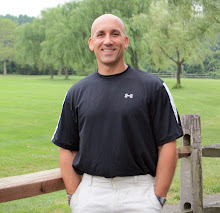There is no doubt that today’s trainee will make his way to the local supplement store to try the “latest and greatest” so he can become lean and mean and reach his ultimate potential in muscular gains and strength (see how buzz words sell), but beyond all of that nonsense is the infusion of devices that are down right dangerous and being played off as providing the ultimate in tools for physical fitness. It seems as though gadgets and gismos have actually infiltrated people who claim to be serious about training. I’m not just talking about the countless number of impulsive purchases made by some overweight, out of shape individual who is watching a Saturday morning infomercial with coffee and donut in hand, but experienced institutions and training facilities who are implementing whosi-whats-its and thing-a-ma-bobs to improve ones core-balance-functional-plyo-strength, or whatever the buzz word or term is this week because it is deemed as “the cutting edge” in fitness.
I’m sorry, but I can’t see where standing on a half-sphere trying to balance yourself with weights overhead is a productive means at developing anything other than an injury. I once walked into a personal training studio where I saw a woman on one of these balls with a bar on her back trying to do squats. My initial thought was, well, one of utter amazement and then after rubbing my eyes to make sure I saw what I saw, I just figured she was there to see how long it would take her to tear the cartilage in her knee or ankle. I’m not negating that some of the newer products can be used as effective tools but the concepts used to support most of these products is, well, down right ridiculous and propagated by hype. I’m all for improvement but why is it that people (for reasons other than money) constantly need to impose the concept of “building a better mouse trap” when the original works just fine.
Things like this make absolutely no sense to me when I consider that
the focus on an athlete or trainee should be on improving their strength and becoming less prone to injury while working hard at improving their sport or hobby.
Yeah, sure there were items back in the old days that were touted as being the new way to a leaner body and bigger muscles and plenty of “snake oil” salesman who promised that their new elixir would do wonders for your health, but the “takers” were usually those who weren’t doing anything for themselves physically and just wanted a quick fix. You expect that kind of behavior from inexperienced individuals or those who are half-heartedly going about a fitness program, but I for one have a major problem with those who run out and start implementing the latest toy without intelligently and methodically thinking about the pros and cons of using such devices, especially with their trainees.
I recently did an all day seminar at a local middle school on the importance of having a properly planned exercise program and we talked about nutrition, overall health, etc. A few of the kids came up to me after the class and asked how they could improve their jumping or running or whatever their sport was and I simply advised them to have a qualified individual supervise their strength program and to work hard at what they wanted to improve on. I explained to one student that if he wants to improve his ability to jump higher, then he needs to learn how to jump properly and practice his jumping. If you want to improve your baseball swing, work with a qualified individual to learn the fundamentals and practice hitting baseballs. Most of you are probably thinking that that is pretty simple and basic advice and you know what, you are right. What’s wrong with a simple, basic approach anyway? Why does everything need to be complex to be effective? The simple and basic answer is - it doesn’t.
Over the past few years working out and trying to lead a healthy lifestyle has become more and more complicated for people and it doesn’t have to be that way. Work at implementing an overall fitness program consisting of strength training, cardiovascular conditioning, flexibility training, proper nutrition, adequate rest and close attention to the sport or activity you are trying to improve.
Like the title says, it’s pretty much Old School. - Fred Fornicola
skip to main |
skip to sidebar
"Fred Fornicola is a training innovator and writer in an industry full of restricted thinking. He has listened, viewed, tried, and assimilated just about everything the world of exercise has put forth over the decades. His voice is
one of the few that keeps people's attention." - Randy Roach, Author of Muscle, Smoke and Mirrors
one of the few that keeps people's attention." - Randy Roach, Author of Muscle, Smoke and Mirrors


